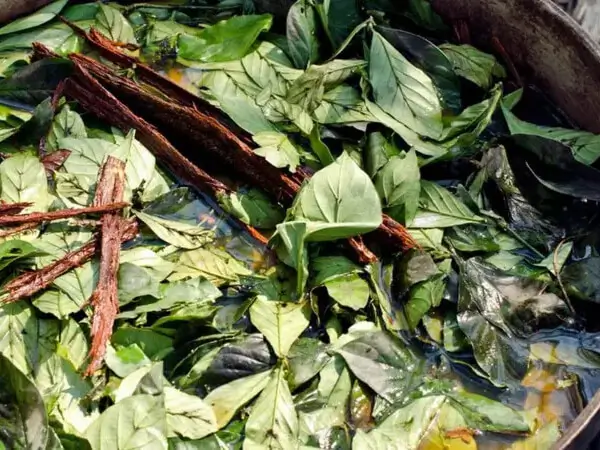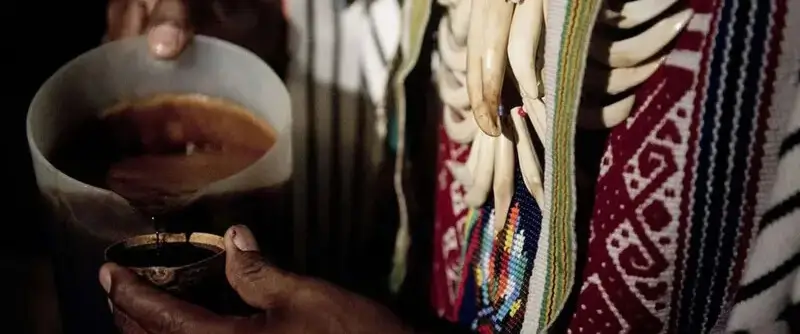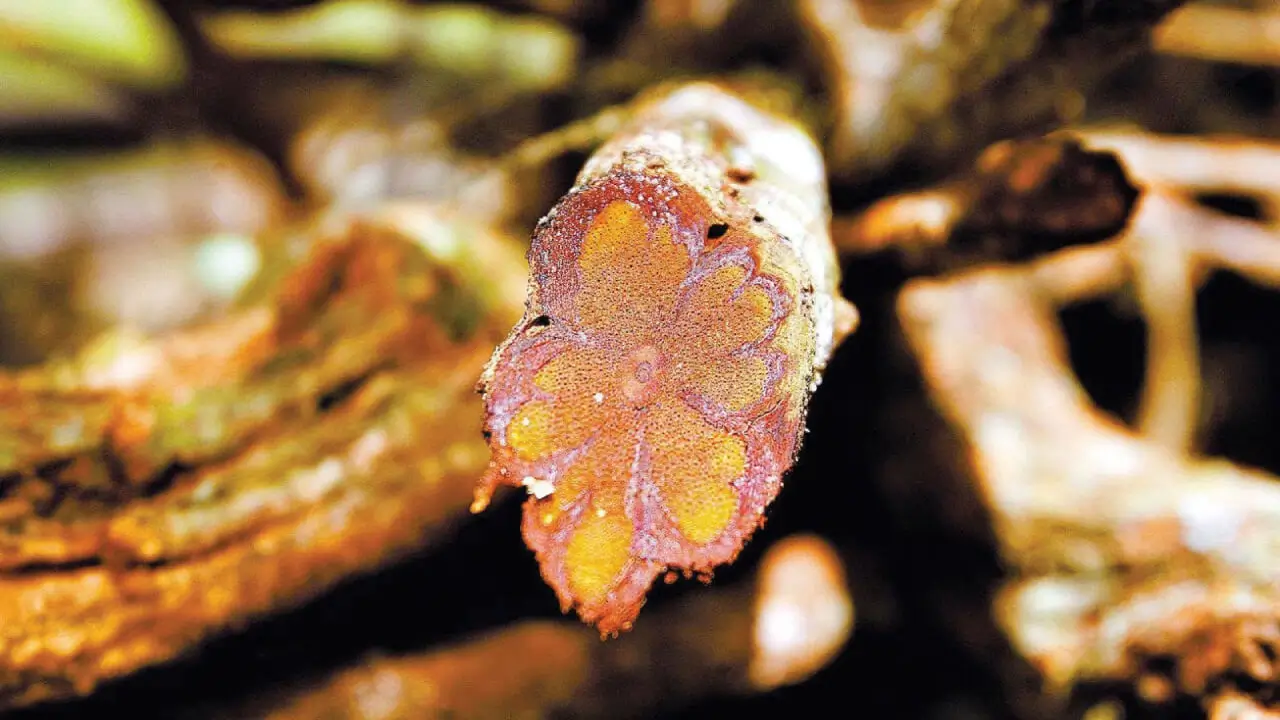What is Ayahuasca?
Ayahuasca is a traditional plant medicine that has been used for centuries – and likely far longer – by Indigenous Peoples of the Amazon Basin. The word ayahuasca comes from the Quechua language, often translated as “vine of the soul” or “vine of the spirits.” It refers to a brew made by combining the Banisteriopsis caapi vine with leaves from the Psychotria viridis shrub (or similar plants, depending on the region). The result is a powerful preparation used in ceremonial contexts for healing, spiritual insight, and connection with the natural and spiritual worlds.
For many Indigenous communities in Peru, Brazil, Colombia, Ecuador, and beyond, ayahuasca is far more than a “psychedelic drink.” It is part of a living cultural and spiritual tradition, deeply rooted in their cosmology, ecological knowledge, and communal life. Ceremonies are usually led by experienced practitioners – sometimes called curanderos, maestros, or ayahuasqueros – who have undergone years, often decades, of training. This training involves not only learning how to prepare the medicine, but also how to navigate and guide the profound visionary states that may arise.


Ayahuasca’s Cultural and Ancestral Roots
In Indigenous Peoples’ settings, ayahuasca is understood as a teacher, a plant spirit, and a bridge between the human world and the wider web of life. It is used for purposes ranging from diagnosing illness to reconnecting with ancestors, from receiving guidance for the community to restoring balance within the individual.
These practices are interwoven with broader cultural and ecological knowledge, including deep relationships with the forest, local plants, and spiritual traditions. In recent decades, ayahuasca has gained attention outside the Amazon, with ceremonies now taking place in various parts of the world. While this global interest has led to more people experiencing the brew, it has also raised important questions about cultural appropriation, sustainability, and respect for the communities from which ayahuasca comes [1].
Ayahuasca and Psilocybin: Understanding the Differences
Ayahuasca and psilocybin (found in certain species of mushrooms) both facilitate expanded states of consciousness, but they differ in composition, duration, and the ceremonial contexts they have been used in. Ayahuasca’s effects can last four to six hours or more, shaped by its combination of plant alkaloids, particularly DMT (dimethyltryptamine) and MAOIs (monoamine oxidase inhibitors) from the vine, which allow the DMT to be active when taken orally [2].
Psilocybin, by contrast, generally produces a shorter experience (around four to six hours) with different subjective qualities.Both have been studied for their potential to address mental health challenges such as depression, anxiety, and addiction. However, psilocybin has been more accessible to researchers in recent years due to differences in international regulation. Our legal psilocybin retreats in the Netherlands provide a safe, supportive environment for those interested in exploring such experiences in a lawful setting.
Neither is inherently “stronger” or “better” than the other – they are simply different tools, with different lineages, purposes, and ways of working.
Contemporary Scientific Research on Ayahuasca
Scientific research into ayahuasca is still relatively young, especially compared to its long history as a living tradition. Modern studies, sometimes conducted with the involvement of practitioners from Indigenous communities, have begun to explore its potential benefits. Some research has suggested that ayahuasca may help people experiencing depression, anxiety, post-traumatic stress, or addiction [3, 4]. Other studies have looked at its role in enhancing self-awareness, emotional regulation, and sense of connection to nature, with neuroimaging showing changes in brain networks linked to self-reflection and emotional processing during ayahuasca sessions [5, 6].
It is important to acknowledge that while these findings are promising, they represent just one way of understanding ayahuasca. For the peoples who have worked with it for generations, the medicine’s value does not depend on scientific validation – it is already deeply known and lived within their cultures.

Honouring and Respecting the Lineages
For those outside the Amazon who feel called to work with ayahuasca, respect is essential. This means recognising the cultural roots of the practice, supporting ethical and sustainable sourcing of plants, and avoiding the extraction of traditions without giving back to the communities who hold them. It also means acknowledging that ayahuasca is not simply a “wellness trend” or “psychedelic experience”. It is a living tradition, deserving of the same care and reverence shown by the peoples who have kept it alive for countless generations.

Psilocybin Retreat in the Netherlands
TAKE THE FIRST STEP
Get the monthly email with tools to help you live a more conscious life.
Just useful stuff – we promise!
Contact Us
Email: contact@consciousgrowth.eu
Legal Note
Taking psychedelic truffles in our retreats is subject to a registration process. Please consult the FAQs for a list of contraindications. Conscious Growth does not offer therapy or treatment for physical or mental health conditions during the retreats.
In accordance with Dutch law, we use exclusively psilocybin truffles that are legal across the country. You can read more about the legal aspect here.
APPLY for a Retreat
Book an Introductory Call
Our Retreats
Frequently Asked Questions
Resources
Terms and Conditions
Privacy Policy
